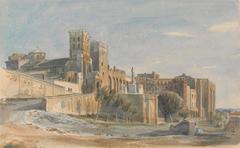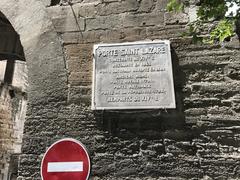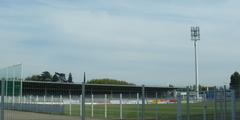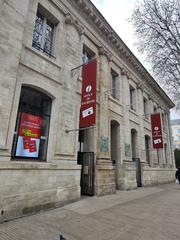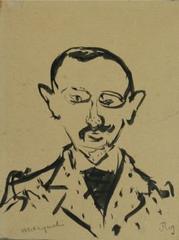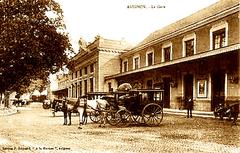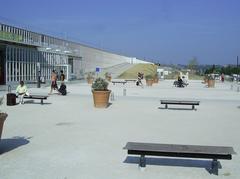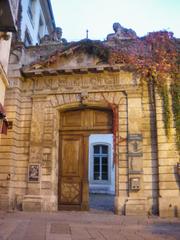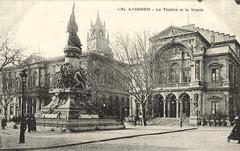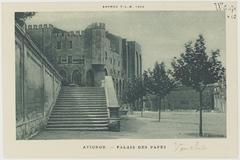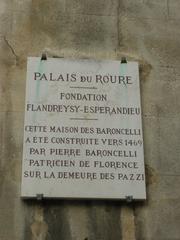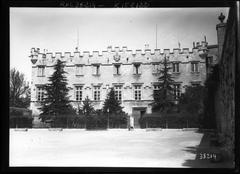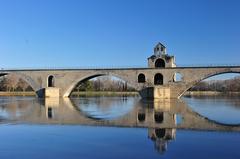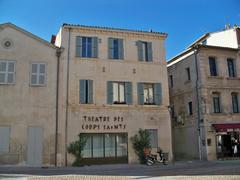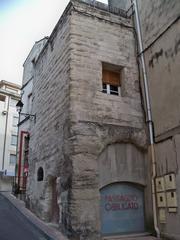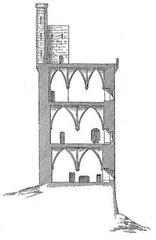Salvati-Palasse Mansion Avignon: Visiting Hours, Tickets, and Historical Significance Guide
Date: 03/07/2025
Introduction
Nestled in the heart of Avignon’s UNESCO World Heritage-listed historic center, the Salvati-Palasse Mansion (Hôtel de Salvati-Palasse) stands as an emblem of the city’s aristocratic and architectural legacy. Though often overshadowed by nearby landmarks such as the Palais des Papes, this elegant hôtel particulier offers a unique window into Avignon’s history, from its medieval papal era through the Renaissance and into the Enlightenment. The mansion’s grand stone façade, ornate carvings, and private courtyards reflect the wealth and influence of the Salvati and Palasse families, whose stories are woven into Avignon’s social fabric.
This guide provides a detailed overview of the mansion’s historical background, architectural features, cultural significance, and practical visitor information, including visiting hours, ticketing, accessibility, and tips for making the most of your experience. Whether you are a history enthusiast, architecture lover, or curious traveler, the Salvati-Palasse Mansion enriches any visit to Avignon (Avignon Tourism, Monumentum, World Travel Guide).
Historical Background
Origins and Evolution
The Salvati-Palasse Mansion dates back to the 14th century, with significant modifications during the 17th and 18th centuries (Monumentum). Its construction coincided with Avignon’s era as the seat of the papacy (1309–1377), when the city attracted influential families, clergy, and merchants who commissioned grand residences. As Avignon transitioned from papal rule to a vibrant French city, the mansion underwent architectural and decorative updates reflecting the prevailing tastes of Renaissance and Baroque France.
Social and Political Role
Hôtels particuliers like Salvati-Palasse were more than mere homes—they were symbols of power and status. The mansion’s prominent location and elaborate design speak to the social ambitions of its owners, who were likely key figures in Avignon’s civic, commercial, or ecclesiastical life. While documentation on the Salvati and Palasse families is limited, the union of their names suggests inheritance or alliances typical of the city’s elite (World Travel Guide).
Architectural and Artistic Features
Exterior Design
- Symmetrical façade: Balanced proportions and evenly spaced windows characteristic of Renaissance design.
- Ornate stonework: Carved cornices, pilasters, and possibly family crests.
- Wrought-iron balconies: Elegant ironwork typical of grand Provençal residences.
Interior Layout
While the mansion’s interior is rarely open to the public, features likely include:
- Central courtyard or garden: Providing light and privacy.
- Grand reception rooms: High ceilings, decorative plasterwork, and period fireplaces.
- Decorative elements: Frescoes, wood paneling, and painted ceilings in preserved areas.
These elements reflect both Italian Renaissance and French classical influences, echoing Avignon’s cosmopolitan history (Architecture of Cities).
Cultural and Historical Significance
The Salvati-Palasse Mansion embodies Avignon’s historical evolution from medieval stronghold to Enlightenment city. Its designation as a Monument Historique ensures its protection as part of France’s national heritage. The mansion contributes to the architectural tapestry that makes Avignon a living museum, with its survival through revolutions and urban transformations testifying to its enduring importance (Monumentum).
Visitor Information
Visiting Hours and Tickets
- Regular access: The Salvati-Palasse Mansion is privately owned and does not have regular public opening hours. There is no permanent museum or daily ticketing (Monumentum).
- Special events: The mansion occasionally opens its doors during cultural occasions such as the Journées Européennes du Patrimoine (European Heritage Days) in September. Entry is often free or by special ticket during these events; check the Avignon tourism website for updates.
- Guided tours: Guided access is rare and typically aligned with special events; advance inquiry is advised.
Accessibility
- Exterior: The mansion’s façade can be admired from the street, with the surrounding historic center generally accessible for visitors with mobility aids.
- Interior: Accessibility inside the mansion during special events may be limited due to historic staircases and narrow passages. Contact the Avignon tourist office for specific accommodations.
Location and Getting There
- Address: 5 rue Dévéria, 84000 Avignon, France
- Neighborhood: Central Avignon, near landmarks like the Palais des Papes and Place de l’Horloge.
- Transport: Easily accessible on foot from Avignon Centre train station; local buses and city parking are available nearby (Radical Storage).
Photography
- Exterior: Photography of the façade is permitted and encouraged.
- Interior: Restrictions may apply during special events—respect organizer guidelines and privacy.
Nearby Attractions
- Palais des Papes: The city’s iconic papal palace.
- Musée du Petit Palais: Renowned for medieval and Renaissance art.
- Place de l’Horloge: Avignon’s lively central square.
- Les Halles Market: A vibrant covered market ideal for sampling local products.
Special Events and Community Engagement
- European Heritage Days: The best time for potential access to the mansion’s interior (Monumentum).
- Festival d’Avignon: While not a regular festival venue, the mansion’s proximity places it amidst July’s cultural festivities (Radical Storage).
- Preservation: The mansion’s ongoing restoration is a testament to Avignon’s commitment to safeguarding its architectural heritage (Sea France Holidays).
Frequently Asked Questions (FAQ)
Q: Can I visit the Salvati-Palasse Mansion inside?
A: Not regularly. Interior access is typically limited to special cultural events; check with Avignon Tourism for announcements.
Q: Are tickets required?
A: No tickets are needed for exterior viewing. Tickets or reservations may be required for special event access.
Q: Is the mansion wheelchair accessible?
A: The exterior is accessible via public streets. Interior accessibility is limited and should be confirmed during event registration.
Q: Can I take photos?
A: Yes, for the exterior. Interior photography depends on event rules.
Q: What other sites should I visit nearby?
A: Palais des Papes, Musée du Petit Palais, Avignon Cathedral, and Les Halles market.
Plan Your Visit and Stay Connected
- For the latest on opening times, events, and guided tours, visit the Avignon Tourism Office.
- Download the Audiala app for audio guides and insider tips on Avignon’s heritage sites.
- Follow Avignon Heritage on Facebook and @AvignonTourism on Instagram for updates.
Explore More of Avignon
Summary and Recommendations
The Salvati-Palasse Mansion, while not always open to the public, remains a vital part of Avignon’s architectural and cultural landscape. Its preserved exterior, rich historical context, and strategic location make it an essential stop for visitors exploring the city’s UNESCO-listed core. To maximize your experience, time your visit with major heritage events and make use of local tourism resources for up-to-date information. By respecting the site’s private nature and supporting preservation efforts, you help ensure that Avignon’s historic charm endures for future generations (Avignon Tourism, Monumentum, World Travel Guide).
Sources and Further Reading
- Avignon Tourism: Visits and Heritage
- Monumentum: Hôtel de Salvati-Palasse
- Architecture of Cities: Avignon
- Sea France Holidays: Avignon History and Culture
- World Travel Guide: Avignon History
- World Travel Guide: Avignon

